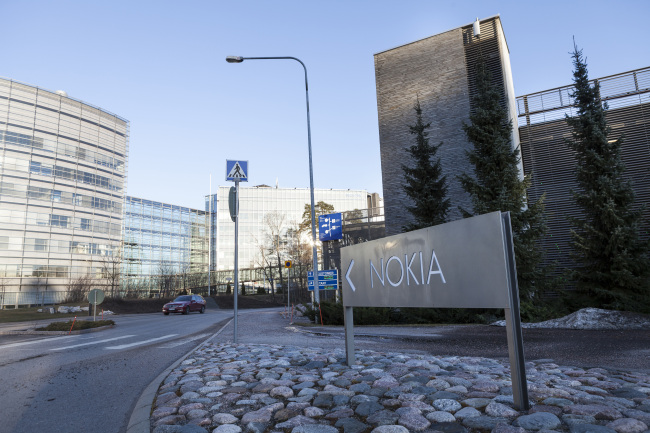 |
A sign stands at the entrance to the Nokia headquarters in Espoo, Finland. (Bloomberg) |
Falling sales of simpler phones are “definitely worrisome,” said Mika Heikkinen, a fund manager at FIM Asset Management in Helsinki, who helps oversee some $2.5 billion, including Nokia shares. “They have to get this under control.”
Nokia Chief Executive Officer Stephen Elop, speaking to investors after the report, pointed to the 105 as a signal that the low-end business can recover after a “difficult” quarter.
While demand for the iPhone and Android devices have made smartphones the fastest-growing part of the market, basic handsets still make up more than half of units sold. That means hundreds of millions of phones each quarter ― a market Nokia dominated until Asian manufacturers such as ZTE Corp., Huawei Technologies Co. and Samsung started challenging it more aggressively. Nokia says the 105 will be profitable, but declined to provide any details. Liberum estimates Nokia will enjoy a margin of about 20 percent on the device.
Of the 336 million handsets Nokia sold last year, only about 10 percent were smartphones. Basic models accounted for 31 percent of Nokia’s revenue, versus 18 percent for smartphones Network equipment made up most of the balance.
Nokia had more than half of the mobile handset market before Apple introduced the iPhone in 2007. Nokia shares have fallen more than 80 percent since then, while Samsung has risen 154 percent and Apple has quadrupled. After five consecutive annual losses, Nokia is down 14 percent this year.
Nokia, based in the Helsinki suburb of Espoo, is counting on cheaper phones like the 105 to build trust in the company’s brand in growth markets such as India and China. Customers who buy a 105 will stick with Nokia when moving to more expensive devices in the years ahead, the company reasons.
“The low-end, high-volume part of the mobile-phone market is a huge opportunity for Nokia in developing countries,” said Francisco Jeronimo, an analyst at IDC in London. “These users will be likely to upgrade to more expensive phones over time, so it’s a good strategy to keep a high market share in this segment.”
The 105 is “very competitive” and should help Nokia with its low-end recovery effort, said Neil Mawston, an analyst at researcher Strategy Analytics in London. A predecessor to the 105, called the 1280, sold more than 100 million units over three years.
Simpler phones have “been the bedrock of Nokia’s business for the past decade,” Mawston said.
(Bloomberg)






![[Weekender] Korea's traditional sauce culture gains global recognition](http://res.heraldm.com/phpwas/restmb_idxmake.php?idx=644&simg=/content/image/2024/11/21/20241121050153_0.jpg)
